Article - RareWine Academy
Charles Heidsieck - The Story Of Shattering Success, Bankruptcy, And Deserved Resurrection
Few adventures are as eventful as Charles Heidsieck's journey to becoming a world-renowned Champagne producer. He did, and this is the magical story.
If you believe in fate, the end of this story will be given. If you do not, the following is a somewhat enchanting tale of a man and a Champagne house that had to go through so much to finally place itself on the Champagne podium among the world's best producers.
The story of Charles Heidsieck takes us to the American Civil War and to Moscow. Furthermore, it portrays a briefly bankrupt Champagne creator saved by diplomacy and a sympathy land plot. Dive into the adventure of the Champagne House of Charles Heidsieck.
"Champagne Charlie" - The Story Of Heidsieck
It obliges to be the son of a Champagne merchant who, in the middle of the Napoleonic Wars, rode into the heart of Moscow just before Napoleon's arrival to offer Champagne to the victorious party. Reportedly on the back of a white stallion and reportedly with an order pad ready to write down orders.
The merchant's name was Charles-Henri Heidsieck, and in 1822 he and Emilie Henriot had a son, Charles Camille Heidsieck, later nicknamed "Champagne Charlie." Today, Charles Heidsieck is a world-renowned Champagne house, and the road to fame and legendary status has been paved with overseas wine success, espionage charges, and resurrection.
The story of Charles Camille Heidsieck is so extraordinary that the 1989 film "Champagne Charlie" was based on his unique story - starring Hugh Grant as the charming Champagne pioneer.
Charles Heidsieck And The Journey To America
When Charles Camille Heidsieck was just 29 years old, he started his own Champagne business in 1852 under the name Charles Heidsieck. At that time, many Champagne rivals were competing in the European market. Hence, Charles decided to look towards the West for wealthy Americans who were not yet blessed with the bubbly seduction in a bottle.
The decision was a good one. Charles charmed the country's elite and pioneered his way through America's Champagne hearts, earning him the quick nickname "Champagne Charlie." The American market had developed a taste for Champagne, and Charles had packed his suitcase with success and fame and headed back - straight into the spotlight in his hometown. Charles had conquered the American East Coast high society. Still, he had also succeeded in Louisiana, though tensions were growing, and the American Civil War was in its infancy.
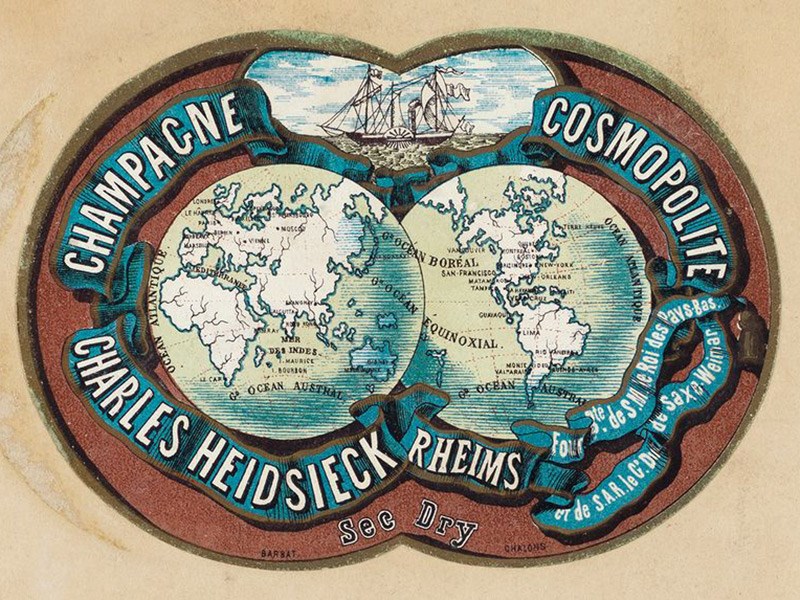 Charles Heidsieck - Cosmopolite
Charles Heidsieck - Cosmopolite
From Champagne Top To Espionage Charges And Bankruptcy
"Champagne-Charlie" not only had a fine product but also clearly inherited his father's tenacity, which unfortunately became his brief nemesis. The American Civil War had fatal consequences for Charles. When the war broke out in earnest, Charles lost his Champagne stocks in the United States. Like his father, he bravely faced the war in pursuit of his Champagne and the recovery of large debts, which accounted for a significant proportion of the company's assets.
His mission proved anything but easy, but in New Orleans, he swapped debts for two cotton shipments to Europe. Unfortunately, these were lost, and Charles was stranded in the southern part of America. Charles wanted to return to France, so he sought help from the French consul. The consul gave Charles a mission to deliver some diplomatic documents so he could get on a boat to Latin America.
In New Orleans, however, he was captured by the Union army, which had taken over the city. The diplomatic information Charles had not yet had the opportunity to hand over was seized. They contained information about the sale of cotton to make uniforms for the Confederate army, and Charles was jailed for espionage.
Charles Camille Heidsieck was now both nearly bankrupt and imprisoned. And had it not been for Napoleon III and Abraham Lincoln, his life might have ended behind bars. He was pardoned after seven months in prison, but when he returned to Reims, the spotlight had been replaced by darkness, and Charles had lost his Champagne success.
A Champagne Phoenix Rises From The Ashes
The story of Charles Camille Heidsieck is both impressive and harsh, and few would have thought that "Champagne Charlie" would rise from his poor bed like a cork that always finds its way to the surface. In 1863, Charles received a letter from America with the deed to a large plot of land in the then-sleepy state of Colorado. A brother of Charles' former agent had taken pity on the Champagne wretch and sent him what was to become the return ticket to success.
With that plot of land, Charles magically owned a third of a village today known as Denver. Colorado woke from its slumber, and silver was found in the mountains around Denver, transforming the village into a metropolis. Charles was able to sell his Denver miracle and revive his Champagne House.
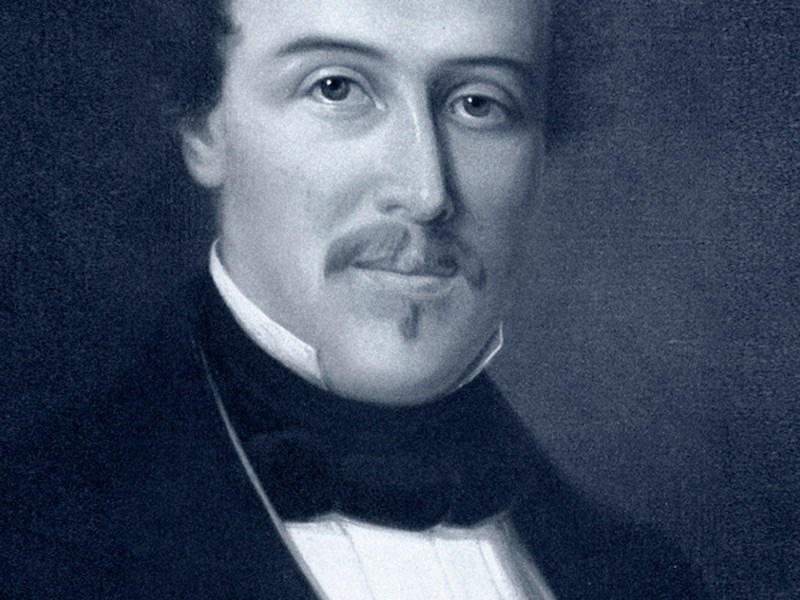 Charles Heidsieck
Charles Heidsieck
Wine Focus And Strengthened Position In Europe
The US adventure did not discourage Charles Heidsieck, and with a new opportunity, he decided to strengthen his position in France and Europe. He, therefore, devoted all his energy to improving his wines, and in 1867 he committed a stroke of genius.
Here he was the first to buy the fantastic chalk caves (Crayères) that run beneath the city of Reims. The caves were created when the Romans dug out chalk to build the city of Reims. After that, they were not used. Until Charles Heidsieck decided to use them to store his Champagne. The Crayères offer perfect temperatures for storage, and sunbeams have absolutely no access.
These cellars are also some of the longest in Champagne, with ample space for aging - and they are even classified as a World Heritage Site by UNESCO. It also meant that the cellars significantly impacted the style that has become characteristic of the house's wines. They are characterized by enormous richness, which arises because the house uses a large proportion of reserve wine stored for years after the harvest - stored in the long cellars under Reims that Charles acquired.
Charles Heidsieck created a strong reputation, which grew in strength. And soon, the Champagne House was widely known in aristocratic circles, so the house achieved the status of official supplier to several European royal courts. "Champagne Charlie" died in 1893, leaving his heirs a strong and flourishing Champagne House.
Charles Heidsieck Today
After Charles' death, ownership of the Champagne House changed hands several times, and the Henriot family kept the baton warm. Joseph Henriot was a descendant of Charles Heidsieck, and in 1975 he took control of the company and began what many would describe as the third act of the Champagne House. Joseph Henriot's father died in 1957, leaving Joseph to lead Henriot Champagne at the age of 21 - inexperienced but with a bag full of courage and his blood running hot with an inherited Champagne spirit. Later, Joseph Henriot was also one of the main reasons Veuve Clicquot Champagne became an icon in Champagne. But first, Charles Heidseick.
Joseph Henriot gave the house's then-chef de cave, Daniel Thibault, a challenge. Specifically, the task was to invent a new prestige cuvée that would take the house to new heights. Both style and elegance had to be refined, and in 1979 this resulted in the creation of "Champagne Charlie," which was followed by a cuvée in 1981, 1982, 1983, and 1985. And although the new prestige cuvée got off to a great start, it was neglected when Rémy Cointreau acquired the Champagne House in 1985. Cointreau also had Krug in its portfolio, and Krug got most of the attention.
Rémi Cointreau retained ownership of Charles Heidseick until 2011, when they sold the Champagne House to EPI Group, which also owns Champagne House Piper Heidsieck and Italian Brunello giant Biondi-Santi, among others. The period from 1990 until the acquisition in 2011 was a period of significant loss of focus, and thus, the Champagne House lost 92 % of its sales. Fortunately, that changed with EPI at the helm.
The attentive reader will no doubt be surprised to learn that there are other Champagne houses with the name Heidsieck, although for the well-informed Champagne connoisseur, this is a matter of common knowledge. The three houses bear the same name and have a connection.
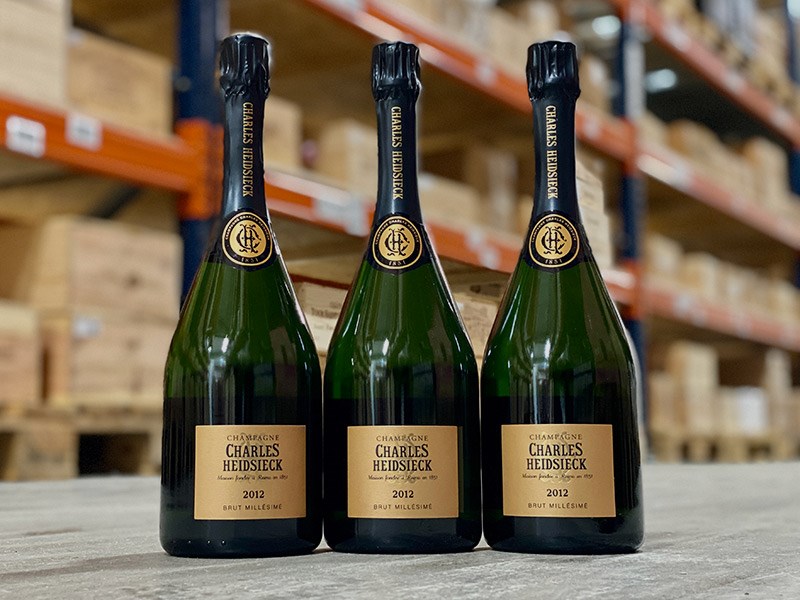 2012 Charles Heidsieck
2012 Charles Heidsieck
Three Times Heidsieck: How It Is Connected
In 1785, Florens-Louis Heidsieck founded the company Heidsieck & Co. His three nephews, Walbaum, Charles-Henri, and Christian Heidsieck, soon became part of the business, and it is from this bloodline that the Heidsieck name branched out. Florens-Louis died in 1823, and Charles-Henri followed in 1843, after which the two remaining family members split up.
Christian started his own, naming it Heidsieck, but sadly his life ended just six months later. His widow afterward married Monsieur Piper, and Piper-Heidsieck became a reality in 1838. Walbaum founded his own house in 1851 under the name Heidsieck Monopole, and you already know the story of Charles Henri.
Thus three Heidsieck Champagne houses in a branching root system started with Florens-Louis Heidsieck. However, Piper and Charles Heidseick are reunited at EPI with Cécilie Bonnefond at the helm today.
Cyril Brun: Fourth Act And Rhythmic Viennese Waltz
It is no coincidence that Champagne house Charles Heidsieck describes their cellar masters as "Masters of their Art, Creators and Gatekeepers", with massive inspiration from that boldness and affinity for the unexplored. In fact, no fewer than 12 times over the past two decades, a cellar master from the house has been awarded the title of "Best Sparkling Winemaker of the Year" at the London International Wine Challenge.
Daniel Thibault, Régis Camus, and Thierry Roset have continued the house style but interpreted it subjectively. Today, Cyril Brun is in charge of ensuring the house's success, and he describes the wine's movements in the glass as carried by the rhythm of a Viennese waltz.
A Viennese waltz created from a noble approach to Champagne making.
Cyril Brun studied and graduated from the Faculty of Science in Reims in the late 1990s, and he comes from a family of wine growers. His father, grandfather, and great-grandfather were all involved in everything from grape growing to winemaking. In 2019, the title of "Best Sparkling Winemaker of the Year" went to Cyril Brun, so there is some evidence that he was right to follow in his ancestors' footsteps.
Heidseick Styles
Charles Heidsieck is known for using reserve wines that are 20% older than what their competitors operate on. Furthermore, they are known to use a significant amount of reserve wines - in fact, as much as 40 % that are, on average, ten years old. And it does not stop there. The UNESCO cellars offer perfect aging for the wines, and also, in the aging process, Charles Heidsieck distinguishes itself from its competitors. Indeed, the wines are aged 2-5 times longer than the appellation rules require, although their Brut Réserve non-vintage Champagnes are similar to those of most competitors.
Indeed, Cyril Brun explains that the house's wine philosophy is based on two pillars: long maturation and a large quantity of reserve wine.
Charles Heidsieck has 75 hectares, of which 25 % are Grand Cru vineyards. Furthermore, the house relies on partnerships with other winegrowers. They have partnerships that go back several generations - based on trust and a shared desire to strive for the highest quality constantly.
Since 2015, Charles Heidsieck is also certified as a "Sustainable Winegrower in Champagne", which requires great respect for the earth. The house uses no chemicals, no chemical herbicides, and only organic fertilizers.
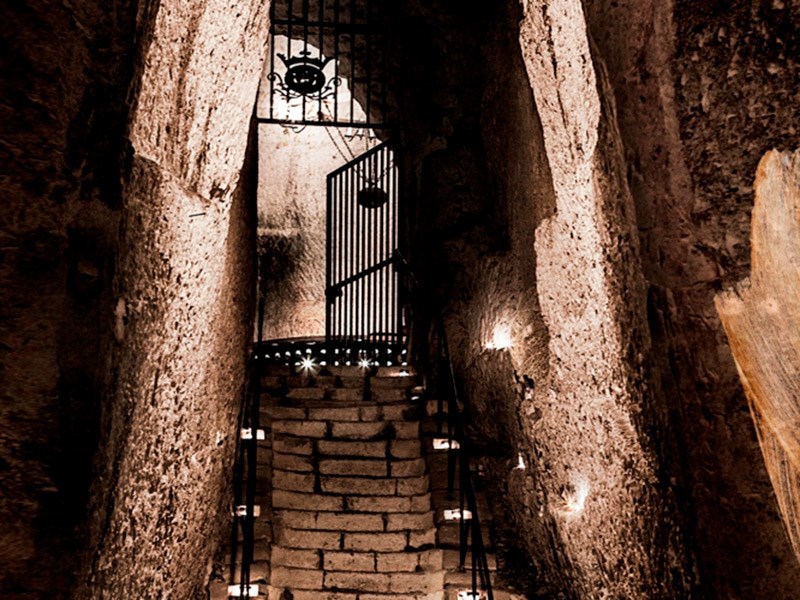 The wine cellar in Reims
The wine cellar in Reims
Overview Of The Champagnes
The Champagne house Charles Heidsieck produces a number of cuvées, and according to the house itself, each has its own personality, and each its own tone. Neatly set aside, reserve wines form a perfect symbiosis with the Champagnes from Charles Heidsieck.
Brut And Rosé Réserve
Both the Brut Réserve and Rosé Réserve of the House stand out for their distinctive and unconventional character. Brut Réserve is described as the essence of the Heidsieck style and is often called "Charles." It is characterized by complexity, precision, indulgence, and depth. The grapes are carefully selected from 60 vineyards in Champagne, and it also contains 40 % reserve wines and is aged for an average of 10 years.
Rosé Reserve is also distinguished by its precision but is also described as being very intense. It consists of 5-6 % red grapes from Les Riceys, and these were chosen because this particular terroir gives a sublime expression of pinot noir, which gives a strong stem to this particular Rosé Réserve.
Blanc De Blancs
In 1949, Charles Heidsieck produced his first Blanc de Blancs because their passion for Chardonnay was great. A selective blend of very young Chardonnay vintages, on the one hand, and heavier Chardonnay vintages, on the other, is made here. The art is to make opposites coexist in a bottle - in 2018, this Blanc des Blancs cuvée was relaunched, and it is the result of 100 % Chardonnay from Cöte des Blancs, and it is aged for 3-4 years in the famous cellar, which exceeds the norm in Champagne.
Vintage Champagnes And A Conversion
Vintage Champagnes are often at the top of the hierarchy in Champagne houses, and Charles Heidsieck has vintage Champagnes in their range. They make both a Brut and Rosé Millésimé, expressing the more exceptional vintages. And then they make a Blanc des Millénaires, which is gaining much recognition. True to form, however, there are exceptions to the rule - especially at Charles Heidsieck. This has meant that vintage Champagne has actually been converted. Read about both here.
A Legendary Cuvée: Blanc Des Millénaires
Daniel Thibault created the first cuvée, Blanc des Millénaires, in 1983; many would say it is his most significant work. This was followed by the 1985, 1990, and 1995 vintages, the last of which has been mainly instrumental in attracting attention to the Champagne house of Charles Heidsieck.
Thibault died in 2002, and since his death, only three more Millénaires have been released: 2004, 2006, and 2007. These cuvées are made up entirely of wines from the same year, and these years have been judged exceptional by the cellar master, which is why the grapes from them are allowed to become Millénaires at all.
The Return Of Champagne Charlie
Charles Heidsieck's cuvée "Champagne Charlie" has been released in only five vintages under Thibault's wings, with 1985 being the last, and it is scarce to see one of these examples today.
When Cyril Brun came to the helm in 2015, he became very keen to revive the historic "Champagne Charlie" and to celebrate the bicentenary of Charles-Camille Heidsieck's birth, the Champagne house has decided to revive "Champagne Charlie" - but this time not as vintage champagne. According to Brun, the natural beauty of Champagne lies precisely in multi-vintages because blends help create a greater identity than single vintages manage.
Brun finds inspiration in the house's gigantic library of reserve wines, and so the latest release (2022) is based on 80 % reserve wines spread over nearly two decades. "Champagne Charlie" can also easily coexist with Blanc des Millénaires, as "Champagne Charlie" is not released yearly. Moreover, only 5,500 bottles are released at each release, some of which will be magnum and jeroboam.
When "Champagne Charlie" was again a reality, the first bottles were shipped from the cellars of Reims aboard a cargo boat to New York, reaching land for the bicentenary of Charles' birth on June 16. As a symbol of Charles' conquest of America.
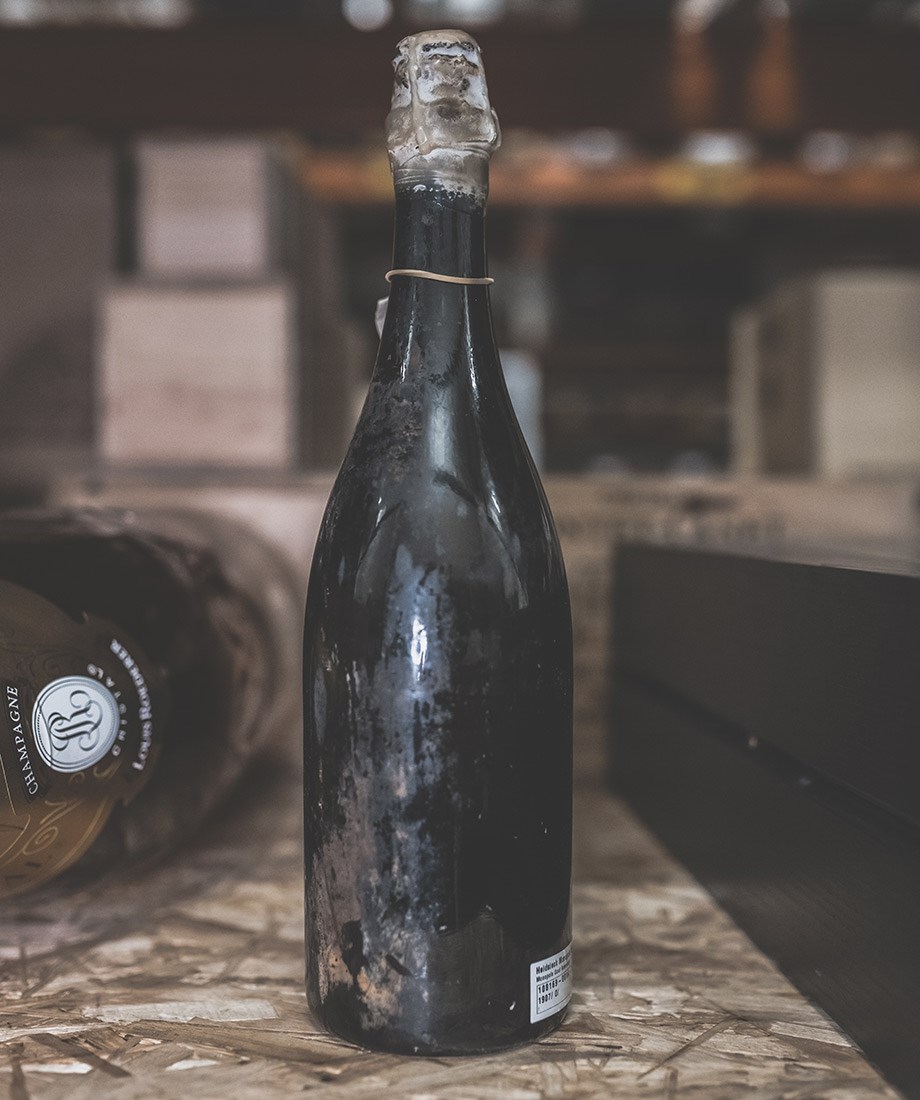 1907 Champagne Heidsieck from the Jönköping expedition
1907 Champagne Heidsieck from the Jönköping expedition
Charles Has Left Clear Historical Traces
Few people's lives and careers are as eventful as Charles Heidsieck's. A life filled with ups and downs. Filled with drive in pursuit of the American dream. Filled with perseverance and a large dose of luck.
Charles Heidsieck popularised Champagne in America, which many producers and Champagne connoisseurs today thank him for. In his time, he could hardly walk in peace without a following of journalists at his heels, he is said to have told his wife. The attention could be a nuisance, but it was also a crucial element in the pursuit of fame and sales. After all, Charles Heidsieck had 80 years as the best-selling Champagne in America.
The story of Charles Heidsieck is a marvellous one, and fortunately Charles-Camille Heidsieck was not checkmated during the American Civil War. He got up and continued to do what he was born to do - create magnificent champagne that today delights the world's Champagne connoisseurs.
